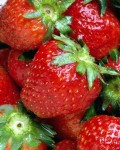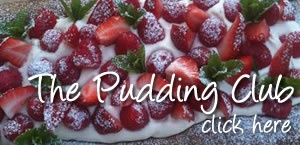Northamptonshire food and drink awards heat up09 Aug
NORTHAMPTONSHIRE’S TOP NINE PROVE THEY CAN STAND THE HEAT – AND GET TO STAY IN THE KITCHEN!
The oven gloves are now firmly on as the battle for the county’s highest culinary honours heats up!
Following an entertaining evening of deliberating, cogitating and digesting by a select panel of judges in the magnificent Elizabethan setting of Holdenby House , a shortlist of nine finalists from across the county have been chosen in the brand new Northamptonshire Food and Drink Awards. They will now go forward to fight it out for the title of ‘Best Local Produce’ and ‘Best Drink’ for 2009 later this month.
The Awards, which have been devised by Northamptonshire Enterprise Ltd in partnership with the Holdenby Food Show, are aimed at celebrating all that is great about the county’s produce and drink.
Everyone from farmers and growers, to bakers and brewers were invited to put forward their produce. The chosen finalists in the ‘Best Local Produce’ category are:
Dundee Cake from Towcester Country Markets
Mellow Yellow rapeseed oil from Farrington Oils
Potted Beef from Sauls of Spratton
Scarborough Fair Jelly from M.U.T.T.S
The Boozy Dark Breakfast marmalade from The Pickled Village
While the shortlist of finalists in the ‘Best Drink’ category are (in alphabetical order):
Champs D’Amours Sparkling White from Fleur Fields
Fire-bellied Toad Beer from Frog Island Brewery
Northamptonshire Bitter from Hoggleys Brewery
Tickled Pink Sparkling Rosé from Welland Valley Vineyard
Duncan Farrington from Farrington Oils said “This is absolutely fantastic. Local support is vital to us. We’re proud of Northamptonshire and proud to be a finalist”. Meanwhile Julie Hoggley, who produces Northamptonshire Bitter said, “Brilliant! It’s just what we wanted. We’re extremely pleased to be a finalist in these awards, and we’re looking forward to the public tasting and the final at the Holdenby Food Show”.
Those charged with the difficult, but mouth-watering, task of picking their favourites from over fifty entries into the county-wide competition, included Northampton optometrist – and former BBC Masterchef finalist – Brian Tompkins and Saints, Scotland and British Lions prop Euan Murray. Said Brian “Having been on the fringe of Northamptonshire’s food scene for more than 15 years, I consider it an honour to have played my part in such an awards scheme. It makes me really proud to know that we have so much to shout about in the county.” Meanwhile Euan is clearly developing a passion for his newfound local cuisine: “Coming from the north of the border, but now calling the county home, it’s been great to experience a true taste of Northamptonshire!”
The competition’s co-ordinator, Rachel Mallows, from Rachel Mallows: Services to Business, said every entry deserved to win. “We thought the standards would be high but even we were surprised by the effort and enthusiasm from everyone who took part. The competition has proved that Northamptonshire can boast plenty of fantastic, fresh and locally-grown wares and choosing our finalists was a really difficult process – I’m just glad I wasn’t one of the judges! ”
Visitors to the Holdenby Food Show on 30th and 31st August will have their chance to taste the nine short-listed products before the final expert panel of judges, including the former head of Raymond Blanc’s cookery school Stephen Bulmer, announce the winners in the “Best Local Produce” and the “Best Drink” categories.
Kate Dent, Head of Tourism at Northamptonshire Enterprise Ltd, said: “These awards will play a vital role in our quality approach to tourism in Northamptonshire. The Northamptonshire Food and Drink Awards are a perfect way of raising the profile of Northamptonshire whilst gaining much-needed publicity and ongoing support for all those who get involved.”






















 year being bigger and better than the one before. The Holdenby Food Show also has fantastic new sponsors for 2009, the Northampton based company Bell, who are suppliers of Aga and beautiful kitchens, and Shires Cookery School, perfect partners for this tasty event!
year being bigger and better than the one before. The Holdenby Food Show also has fantastic new sponsors for 2009, the Northampton based company Bell, who are suppliers of Aga and beautiful kitchens, and Shires Cookery School, perfect partners for this tasty event!



